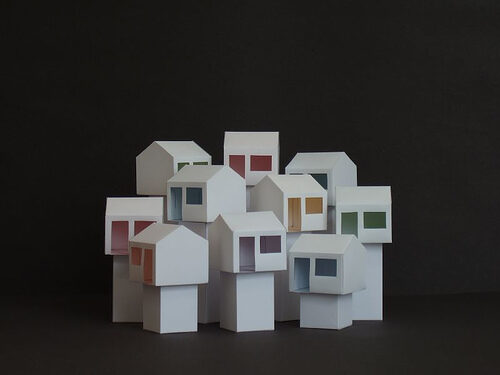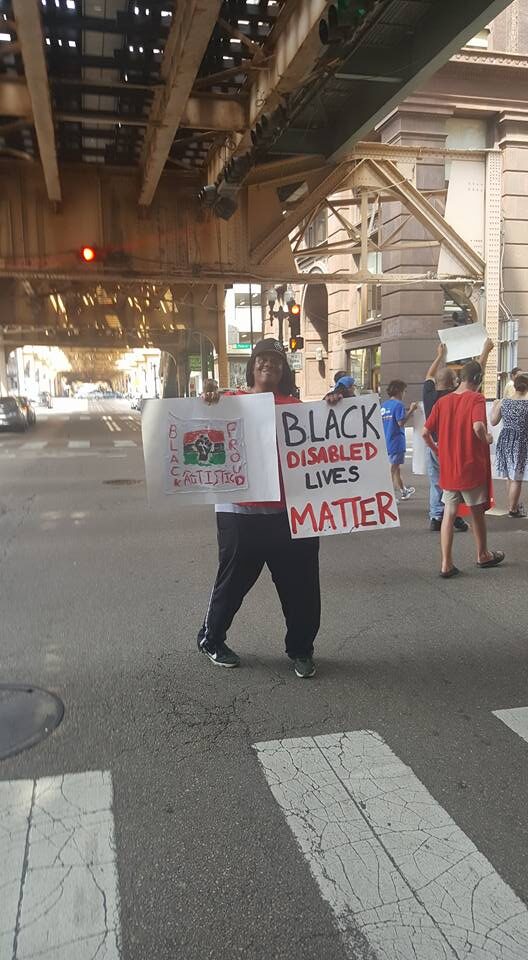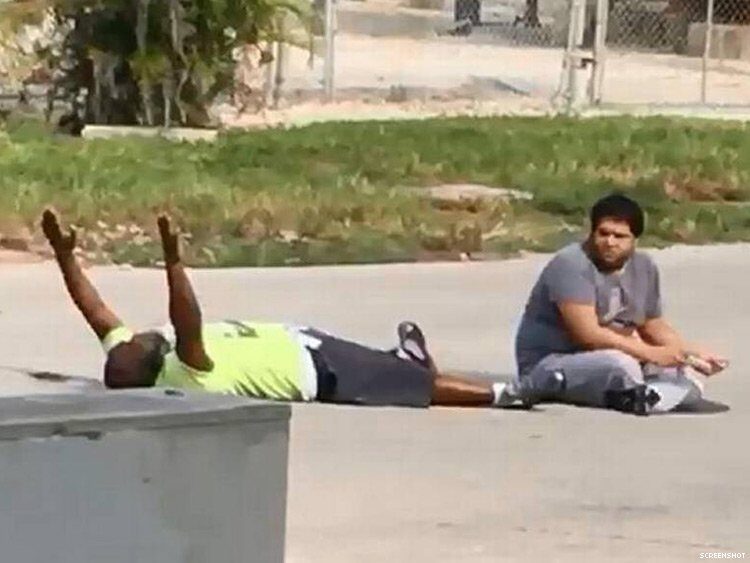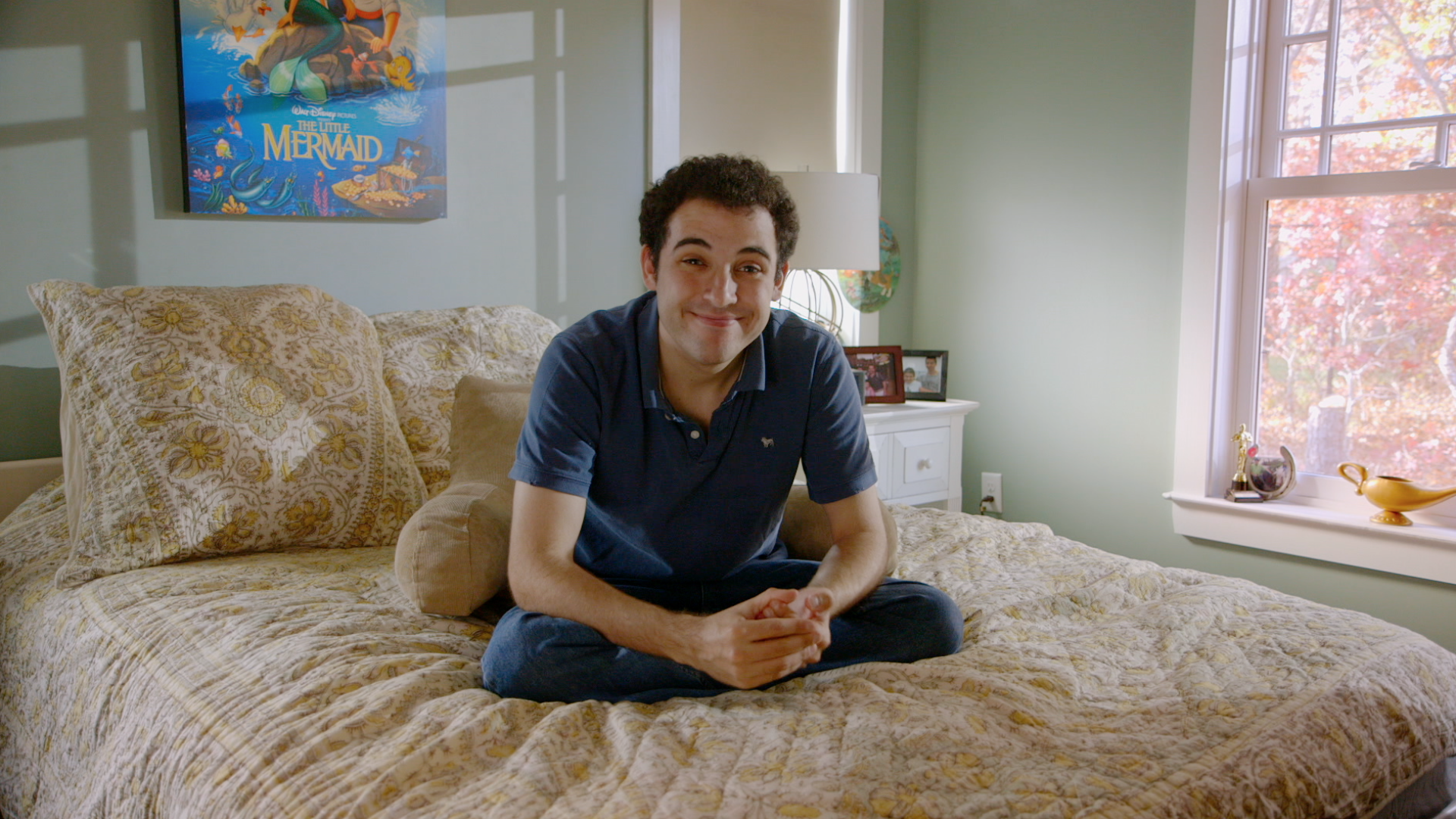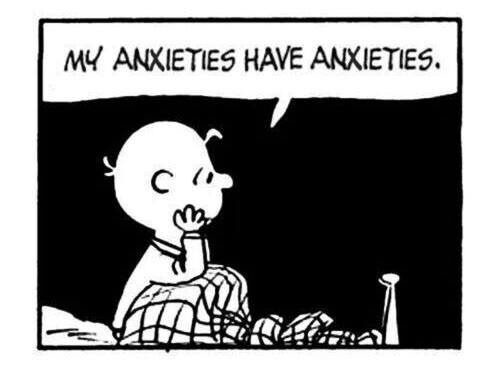Kit Mead kpagination.wordpress.com Photo: Mike Wilson. Creative Commons license. [image: White paper houses with different colored doors & windows.] Introduction Less than a month after I wrote a blog post on the media misrepresentation of Autistic people like me, I’ve gotten wind of yet another case of journalism that misrepresents Autistic people – and in this case, community living too. The article is courtesy of Rolling Stone and the Atlantic reprinted it. I could link to it, but it’s one of the top results if you google “Rolling Stone autism.” Here are the two main premises of the article: High support autistic people can’t live fully in the community. But group homes cost too much. We should fund farm-based settings instead. The Medicaid settings rule in 2014 that declared most farms and compounds for disabled people segregated settings ruined many parents’ hopes and dreams. So… it’s unethical (because it is…
Year: 2016
M. Kelter theinvisiblestrings.com Photo by Boudewijn Berends, used under a Creative Commons license [image: head and shoulders of a person wearing glasses backlit by partially-lighted fog and clouds.] When it comes to online discussions about autism issues, I regularly interact with two realms. The first realm is one we’re all familiar with: the day-to-day articles and conversations and debates that take place regarding a wide range of spectrum issues. Causation, research, personal stories, opinions … just the usual autism topics that you come across as you scroll around blogs, and Twitter, and Facebook. The second realm consists of an invisible community. It’s made up of people who are absorbing every discussion, every debate, every article … yet they are not participating, not sharing their own ideas. They’re just there, quietly and attentively taking it all in. This second group is made up of suicidal autistics. This is not just an…
Pharaoh Inkabuss blackautist.tumblr.com [Photo: Black person at outdoors demonstration holding two signs. One says, “Black, Autistic, Proud” with the Black Power flag and power fist. The other says “Black Disabled Lives Matter.”] Each July, hundreds of people participate in the Chicago Disability Pride Parade, where Chicagoans see the living history of the contributions the disability community made in Chicago. It’s also where participants can enjoy meeting fellow members of the disability community, and display their pride in their community. July 23rd of this year was my second Disability Pride Parade; I marched on behalf of the Chicagoland Chapter of Autistic Self-Advocacy Network (ASAN). My co-chapter leader, Amanda, made a few signs for the parade; one of them had a message on each side. On one of the sides, it reads: “Black Disabled Lives Matter.” I marveled at the sign and I carried it with my right hand. I also…
Shannon Des Roches Rosa Senior Editor Behaviorist Charles Kinsey trying to comply with police while protecting and reassuring his autistic charge Arnaldo Rios photo via The Advocate [image: Black man lying on his back with his hands in the air, in the middle of the street, next to a seated Latino man.] Here is what we are hearing right now, in the wake of Black autistic caregiver Charles Kinsey being shot by a North Miami police officer while trying to protect and support Arnaldo Rios, a Latino autistic man who had wandered from the group home where Kinsey worked: Black people are not safe. Latino people are not safe. People of color are not safe. Autistic people are not safe. People with Disabilities are not safe. And heaven help you if you fall into more than one of those categories, or are also LGBTQ+ or otherwise a member of a…
Shannon Des Roches Rosa www.squidalicious.com We don’t have enough good movies about autism. This is a fact. And by “good” I don’t mean “struggles pluckily and inspires non-disabled people to be grateful for their own lives” or “overcomes their disabilities thereby inspiring non-disabled people to try harder in their own lives.” I mean we don’t have enough honest, rich, complicated stories of autistic people living their own lives on their own terms. But now, we have Life, Animated, which opens in theaters throughout the U.S. and Canada over the next two months. It’s not a perfect movie, but it is a movie that centers Owen Suskind, its autistic protagonist, to a degree rarely shown in autism stories. Centers him not only in his own documentary, but amidst his family’s love and support, and during his journey towards independence. Owen Suskind. Photo courtesy The Orchard [image: a smiling white man with…
Maxfield Sparrow unstrangemind.com [Image: Young white boy with an open-mouthed, yelling expression, and hands over his ears.] Dear Young Autistic, I am like you. I am Autistic. Now I am a middle-aged Autistic (I’m probably older than your parents) but I was once a young Autistic like you are now. One of my biggest struggles was (and is) with anger. People have commented many times over the years about my anger. You might be angry, too? People around you might talk about your anger to you or to each other where you can hear them. Or maybe people don’t talk much about your anger because you’ve got ways to push it down and hide it from everyone. If you think you aren’t angry at all, check to make sure you didn’t hide it so well you can’t see it yourself. Why was I an angry young Autistic? I felt stuck…
How many anxious people are not getting helped because access to mental health services is blocked by the lack of accommodation for the very issue that brings them seeking services in the first place?
Kris Guin queerability.tumblr.com Source: Mel Green/Flickr [image: Church wall hanging: rectangular quilt reading “Welcome” in blue letters, surrounded by red hearts in white diamonds, on a swirly rainbow background.] I think that communities and people of faith should make social justice work a priority. Not only do I think that people of faith have a moral imperative to make the world a better place, but I think it’s good for the faith community. I don’t know how non-Christian faith communities are, but I think the Church and church* are inaccessible to many folks. Dressing up in nice clothes is a social standard in many churches because of the belief that you need to “dress up for God.” This prevents many people from being able to go to church on Sundays because some people might not be able to afford nice clothes, or some people might have sensory issues with nice…
Crystal Garrett Snoopy Souce: www.peanuts.com [image: the cartoon dog Snoopy, doing the “Snoopy Dance.”] Zachary’s laughter has been called infectious. One specialist even opined it sounded much like Charles Schultz’s famous character, Snoopy. Those breath-taking sounds of pure joy that burst forth from deep inside his belly are a special treat these days. Zachary doesn’t laugh much anymore. There’s a reason my six-year-old’s giggles have been replaced by meltdowns. And his story deserves to be told because he is not alone: There are many traumatized autistic children just like him—their stories must be heard, too. And if we have any compassion, we must listen to them. This is Zachary’s story. It was only the third day of first grade — Aug. 26, 2015 — that my child was involuntarily committed to a hospital more than two hours from my home. Zachary had not been properly diagnosed yet, but we would…
Holly Robinson Peete | Photo: Gatepath [image: Candid photo of actress & author Holly Robinson Peete] Actress, author, and philanthropist Holly Robinson Peete spoke at a Gatepath event near San Francisco last week. She talked about her new book Same But Different: Teen Life on the Autism Express, which she co-wrote with her autistic son RJ and his non-autistic twin sister Ryan, about understanding and including autistic people, about supporting autistic kids with high support needs who don’t have the resources her family does, and why “We need to spread the word about how neurodiversity is another form of diversity.” TPGA’s Shannon Rosa talked with Holly after the event, which was nifty because Shannon worked with the HollyRod foundation during the earliest part of the iPads for Autism movement, including developing a spreadsheet of recommended autism apps, had interviewed Holly, and had featured her writing here on TPGA — but…
